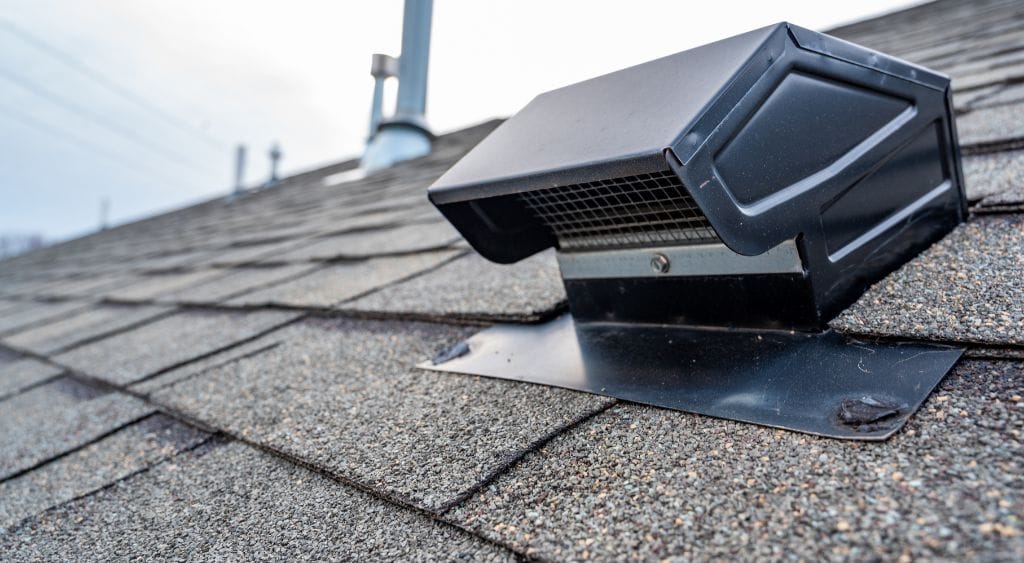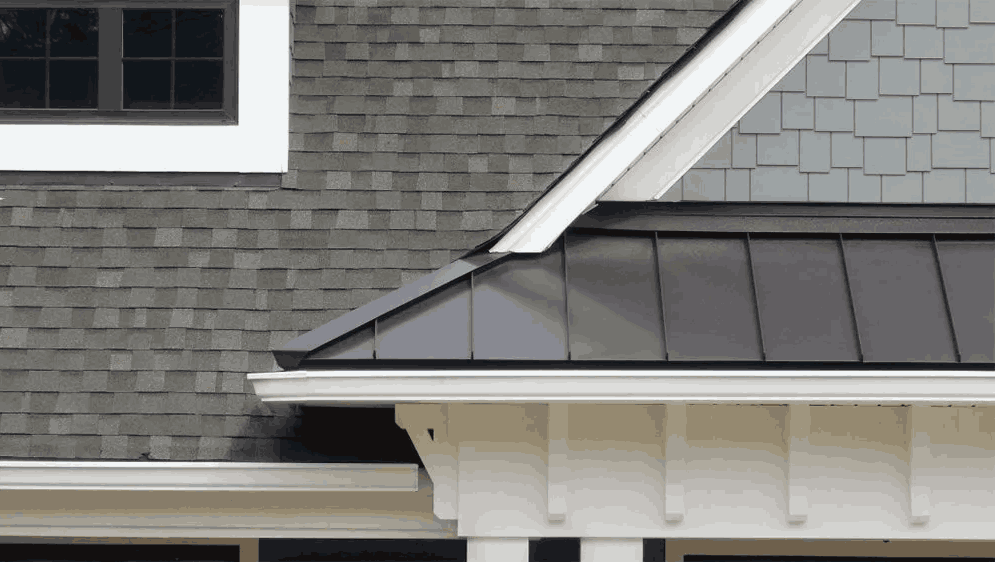
Arlington, TX, is known for its hot, sometimes scorching summers. While air conditioners work hard to keep indoor temperatures pleasant, homeowners often overlook a key factor in maintaining a comfortable home: proper roof ventilation. In this blog post, we’ll discuss why ventilation matters, how it helps combat Arlington’s heat, and the best ways to ensure your roof is optimized for maximum cooling and efficiency.
Why Roof Ventilation Matters
1.1 Controlling Indoor Temperatures
Proper roof ventilation allows hot air to escape from your attic, preventing it from seeping into your living areas. By expelling trapped heat, your AC won’t have to work overtime, which can reduce utility bills and extend your HVAC system’s lifespan.
1.2 Managing Moisture and Humidity
Ventilation does more than just expel heat. It also helps control moisture. Without adequate airflow, water vapor can build up, potentially leading to mold, mildew, or wood rot in your roof’s structural components. This can become an even bigger issue during Arlington’s occasional bouts of high humidity and stormy weather.
1.3 Protecting Your Roofing Materials
Excessive heat and moisture trapped in the attic can age shingles prematurely, cause underlayment to warp, and even compromise your roof deck. Proper ventilation keeps roofing materials cooler and drier, extending their lifespan and reducing the need for frequent repairs.
The Basics of Roof Ventilation
2.1 Intake Vents vs. Exhaust Vents
Roof ventilation generally relies on a two-part system:
- Intake Vents: Typically located at or near the soffits (the underside of your roof’s overhang), these vents draw in cooler air from outside.
- Exhaust Vents: Commonly installed along the ridge (peak) of the roof or via gable vents, these vents allow hot air to escape.
Effective ventilation requires a balance between intake and exhaust so air can flow freely through your attic.
2.2 Passive vs. Active Systems
There are both passive and active methods for moving air through your attic:
- Passive: Uses natural forces like wind and thermal convection to draw air in and let it out. Ridge vents and soffit vents are typical examples.
- Active: Utilizes mechanical components (e.g., electric or solar-powered attic fans) to force hot air out of the attic and draw fresh air in more aggressively.
Key Benefits of Proper Roof Ventilation
3.1 Lower Energy Bills
With intense summer heat in Arlington, a poorly ventilated attic can become a heat reservoir, pushing temperatures in your living spaces higher. Proper ventilation ensures trapped hot air escapes, reducing the strain on your AC and, in turn, lowering your cooling costs.
3.2 Extended Roof Lifespan
Excessive attic heat can cook your shingles from the inside out, causing them to warp or buckle prematurely. Proper ventilation also combats moisture buildup, which can cause rotting or delamination of roof sheathing. Together, these benefits can significantly extend the life of your roof.
3.3 Mold and Mildew Prevention
If moist air sits stagnant in your attic, it can quickly foster mold and mildew. These can compromise air quality inside your home, cause structural damage, and even trigger health problems. Adequate ventilation helps keep moisture levels in check.
3.4 Improved Indoor Comfort
A home with a balanced ventilation system is cooler and more comfortable. It prevents hot attic air from sneaking into your living areas while reducing the burden on your HVAC system.
Signs Your Arlington Home Lacks Adequate Ventilation
- Excessively Hot Attic: If the attic is unbearably hot, even on milder days, it’s a strong sign you need better ventilation.
- High Energy Bills: Are your summer energy bills skyrocketing? Poor ventilation might be forcing your air conditioner to run longer.
- Mold or Mildew Smells: If you notice musty odors in the attic or on the upper floors, trapped moisture may be feeding mold growth.
- Curling or Buckling Shingles: Shingles that are warped could be suffering from excessive heat underneath.
- Visible Condensation: Dark, damp patches or water droplets under the roof deck can be a red flag that your attic isn’t drying out properly.
Ventilation Solutions for Arlington Homes
5.1 Ridge and Soffit Vents
A ridge vent runs along the peak of your roof, with specialized slots allowing hot air to exit. Soffit vents near the eaves allow cool outside air to flow into the attic. Together, these passive vents create a continuous airflow loop.
5.2 Gable Vents
Some homes feature gable vents (vents in the triangular portion of exterior walls). While not as efficient as ridge and soffit vent combinations, they still provide a route for hot air to escape.
5.3 Attic Fans (Powered or Solar)
Electric attic fans actively pull hot air out of the attic, but they can slightly increase energy usage. Solar attic fans, on the other hand, run on the sun’s power—ideal for Arlington’s sunny climate. These fans can be especially helpful if your home’s design doesn’t allow for enough passive ventilation.
5.4 Insulation Upgrades
While not strictly part of “ventilation,” upgrading attic insulation goes hand-in-hand with improving airflow. Inadequate insulation can trap heat near your living spaces. Look for loose-fill cellulose, fiberglass batts, or spray foam to keep hot air at bay.
Why Arlington’s Climate Demands Proper Ventilation
- Extreme Summer Heat: With temperatures often climbing into the high 90s or triple digits, an under-ventilated attic can easily hit 140°F or more, forcing your air conditioning to work overtime.
- Storm Seasons: When storms blow through, high winds and rain can raise humidity levels. Ventilation helps dry out any moisture that seeps in, preventing mold and rot.
- Rapid Temperature Fluctuations: Even during winter, Arlington can experience warm days followed by cool nights. Proper ventilation ensures these temperature changes don’t wreak havoc on your roofing materials.
DIY vs. Professional Ventilation Upgrades
7.1 Simple Checks You Can Do
- Inspect Soffit Vents: Are they blocked by insulation or paint?
- Examine Ridge Vents: Make sure they’re clear of debris.
- Feel for Airflow: Stand in your attic on a breezy day; is there noticeable airflow?
7.2 When to Call a Pro
- Installing New Vents: Cutting openings in your roof or soffits incorrectly can lead to leaks.
- Adding Attic Fans: Electrical wiring or solar panel setup is best handled by experts.
- Diagnosing Persistent Moisture: If you’re seeing mold or unsure why moisture is collecting, a professional roofing contractor can perform an in-depth inspection.
Why Choose Roofer.com for Your Ventilation Needs
At Roofer.com, we’ve seen firsthand how improper ventilation can drive up energy costs and shorten a roof’s lifespan. Here’s why Arlington homeowners rely on our expertise:
- Local Insights: We understand Arlington’s climate and know which ventilation solutions perform best against Texas heat and storm cycles.
- Quality Workmanship: Our team is committed to precision installation, ensuring all vents, fans, and roof penetrations are properly sealed and integrated.
- Full-Service Approach: Need insulation upgrades, minor repairs, or a complete roof replacement? We do it all, so you don’t have to juggle multiple contractors.
Final Thoughts
When temperatures soar in Arlington, a well-ventilated roof can be the difference between a pleasantly cool home and one that constantly strains your AC. By improving airflow in your attic, you’ll extend the life of your roof, prevent moisture damage, and keep energy bills in check.
Ready to improve your home’s roof ventilation? Contact us at Roofer.com to schedule a ventilation assessment or roof inspection. Our local experts will recommend cost-effective solutions to keep your Arlington home cool, comfortable, and well-protected year-round.




